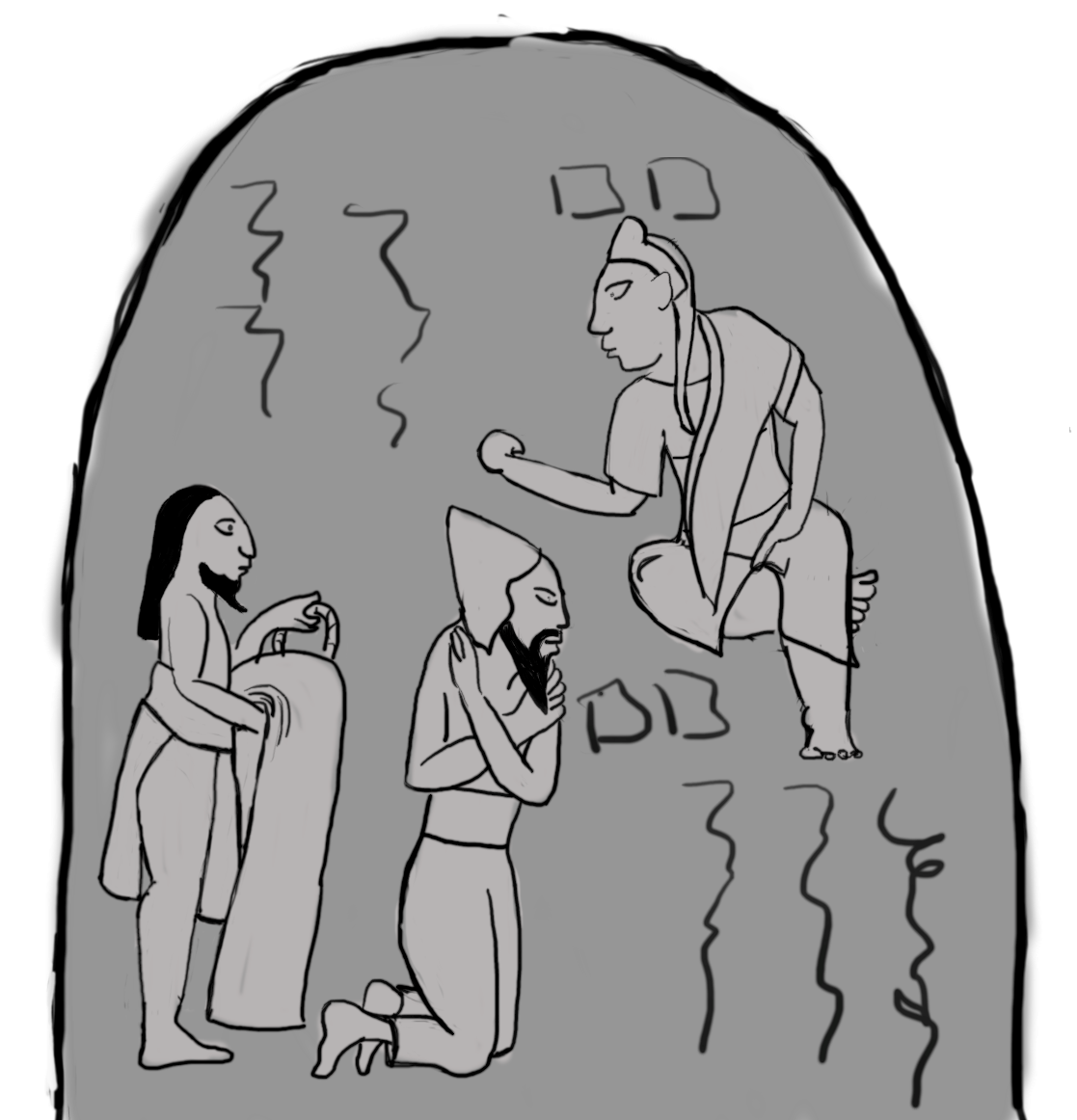Gwarngad Stele
The Gwarngad Stele is a stone monument erected in front of a govermental building in the central plaza of Toad Cape (Gwarŋad Žanged). The stele records a contract between the governmental leader of Republic of Free West Island and the Zeribian Lords of the city. In the stele the Lords submit to the rulership of the Republic, and the governmental official ordains the Lords with a right right to self-govern their people.
Description of the Stele
The most of the Stele is taken by the encarved picture, recording the forging of the deal, with only small amount of text accompanying it. This is because most of the Zeribian population of the city is functionally illiterate. A picture is therefore a much more effective way to remind them of their subordinate status. The text in the stele is written in Ngad i zerib (Zeribian language). The main portion of the text describes the meeting of the two parties, and the terms of the contract and peace deal. The names on two leaders are also recorded in separate larger blocks next to their pictures. In the feet of the stele there is also a shorted description of the contents witten in Nem Ressalit, the language of the Republic.Historical significance
The contract was the first in which the government of West Island officially recognises the local authority of the Zeribian leaders upon their own people. The contract also exempts ethnic Zeribians from many of the religious and worldly laws of the Republic. By accepting their subordinate status the Zeribian lords in turn promissed to lead their people according to the spirit of the Republic. In particular, the deal enabled the Censors to have much more control on the population, and a lot more harder for the people with Zeribian heritage to live according to the Farens culture.Political reasoning
The contract was made to suppress the rising Zeribian separatist movement. The revolutionist were threatening both the Republic's control over the Western parts of West Island, and the traditional Nobility's authority over the Zeribian people. By joining forces the Nobles were able to built a more traditionalist society and lessen the power of the newly arisen middle class of wealthy traders.Legacy
The deal was in place over the 8th century. In the end the Zeribian nobles joined forces with the revolutionist movement, and the Republic was driven away in the 800AH Zeribian Revolution of Der Fem.
Here is a reconstruction of the stele. It was broken 799AH in the demonstrations during The kidnap of the Impostor
Medium
Stone
Location




Comments